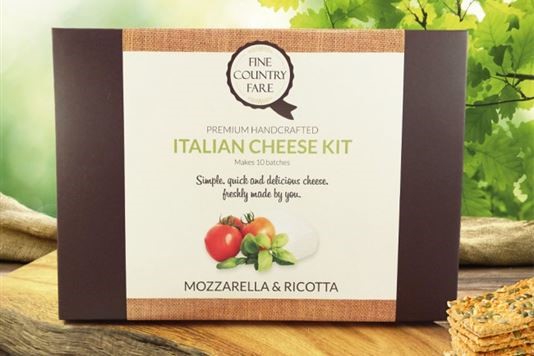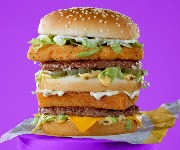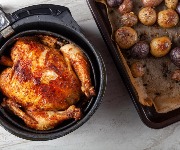Kitchen test: Italian Cheese Kit

Matt Brady tests out a mozzarella and ricotta cheesemaking kit.
Let’s be completely frank: mozzarella and ricotta cheeses aren’t that expensive, and it might seem redundant buying a kit to make your own when they’re also so readily available.
Having said all that, making them yourself can be a really fun experience.
The cheesemaking kit
I got hold of Fine Country Fare’s Italian Cheese Kit, which contains everything you need – bar the milk and utensils – to make mozzarella and ricotta cheese. It costs £19.99 for the kit direct or it's a pound less on Brilliantly British. The company also sells a goat’s cheese kit.
Inside the box are packets of citric acid and sea salt, a butter muslin for draining the ricotta, vegetarian rennet tablets, a dairy thermometer (a handy thing to have around the kitchen) and instruction booklets.
While the boxes contain no items that you couldn’t realistically piece together yourself, the instructions are mostly clear and illustrated with pictures, which helps the uninitiated get to grips with the process easily.
Making mozzarella
Eight pints of milk is a lot. You’ll need a huge pan, which may be impractical for some. Though scaling down might be an option, the rennet tablets are a problem as they are pretty hard to divide neatly as they crumble when snapped.
The recipe calls for a quarter tablet of rennet dissolved in water, but it's hard to snap or cut the tablet into a precise quarter. The instructions suggest, for those making a smaller batch, that you still dissolve a quarter tablet but then only use half the solution. Personally I'd be worried about pouring too much or too little in and ruining the recipe.

It would have made more sense to just supply smaller tablets in the first place, as when you cut them you also lose some of the mass as dust. This doesn’t seem to have an adverse effect on results, but also doesn’t seem all that sensible.
Separating the curds from whey is very straightforward, though complete separation takes a while longer than the 20 minutes suggested in the handbook.

It’s then just a case of scooping the curds out and shaping them into balls, before dipping them back into the heated whey to finish the process. Drop them into a bowl of iced water and then refrigerate.
The resulting mozzarella doesn’t have a jaw-dropping flavour, tasting of milk rather than cheese. It’s too crumbly and needs extra salt and pepper for a better flavour, but perhaps at least one of these problems, the texture, can be improved upon with practice. Being inexperienced, it’s quite possible that I squeezed too much water out while trying to stretch and shape it.

Having said all that, it’s still rather nice as part of a simple salad drizzled with olive oil. Although I could’ve easily popped to the shops and bought some, what would entice me to make it again is that it’s a very fun process. Getting the cheesy smell out of my palms wasn't quite so enjoyable though.
Making ricotta
The ricotta is even simpler to make, but heating up eight pints of milk in a very deep pan to a consistent 85°C without letting it boil is a bit touch and go.
It really doesn’t look attractive once it’s heated and coagulating, and takes forever to soak through the muslin cloth – this definitely takes longer than the hour and a half suggested by the instruction booklet. Still, it is very straightforward to make, requiring just a little time and patience.
Even after a couple of hours soaking, the curds still seem slightly sloppy, so I hold the muslin tightly around the mixture and push hard with a wooden spoon to eke more of the whey out. That seems to help things along, but it’s a slow process.

The hour and a half has extended to about four, though to be fair only 20 minutes or so of that time was active work. The ricotta tastes milky, like the mozzarella, and it's still too wet. I can't seem to draw any more moisture out of it.
Conclusion
This kit is a lot of fun. It’s convenient to have everything ready to go in one box, and the dairy thermometer is a useful bit of kit to have around the kitchen once you've made the cheese.
On the other hand, the cheese isn’t the best, but it comes with a pleasant sense of achievement. I’d have to place emphasis on this being a 'fun on a rainy day' idea rather than something you’re going to make excellent cheese with – unless you’re already an expert.

Have you used cheesemaking kits? And have they produced good results? Let us know in the Comments box below.
You might also like:
Most Recent
Comments
Be the first to comment
Do you want to comment on this article? You need to be signed in for this feature








